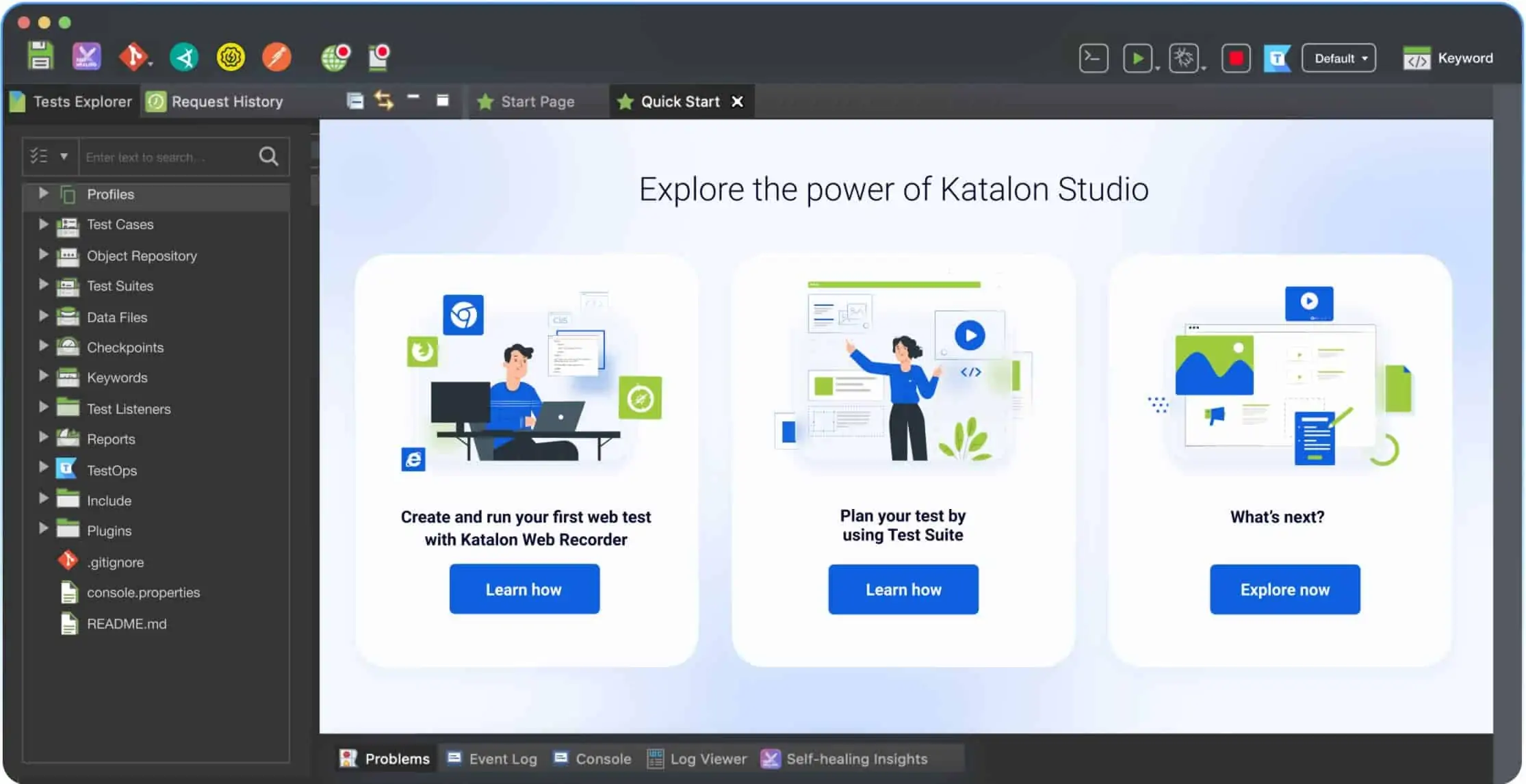Introduction
With more web traffic coming from mobile browsers, web browser online testing has become essential. Advanced features like cross browser compatibility, cross device testing, and parallel testing can catch issues before your users do. This guide explores key advanced testing techniques to ensure flawless web experiences across browsers and devices.
What is Web browser testing?
Web browser testing is a process of checking and verifying that websites or web applications work correctly across different web browsers. When developers create websites or web apps, they need to ensure that these digital products function properly and look good on various browsers like Google Chrome, Mozilla Firefox, Safari, Microsoft Edge, and others.
The Importance of Testing Across Browsers and Devices
Getting a website to display properly across the web browsers and devices in use today is challenging. Each browser renders pages slightly differently – even on the same underlying browser engine. Similarly, mobile devices introduce constraints around screen sizes, input methods and connectivity. Without diligently testing across this matrix, businesses risk losing customers to rendering issues or performance problems.
A recent study found that 57% of users will abandon a site after just three seconds if pages take longer than 3 seconds to load. That same study has shown that 78% of people felt stressed or angry when using a slow website. With global audiences accessing sites across desktop browsers, mobile browsers, tablets and emerging interfaces, ensuring consistent, flawless experiences is impossible without a cross-platform testing strategy.
Fortunately, advanced testing tools now enable easy simulation of how target users will view and interact with sites. Features like browser configuration, device emulators and comparison reporting provide actionable feedback for tuning sites maximally. Exploring today’s leading web testing platforms reveals how businesses of every size can deliver exceptional, glitch-free digital experiences matching user expectations through progressive testing capabilities.
Key Features for Advanced Browser Testing
Modern testing tools aim to offer as much test coverage as possible across the breadth of interfaces customers use, while optimizing budgets and analysis burdens for developers. Core capabilities include:
● Multi-Browser Testing
Validating web compatibility across various browsers remains elemental for web testing solutions. Top platforms support all major browsers across desktop and mobile, including niche and legacy options still retaining significant market share globally. Custom combinations target precise testing needs.
● Cross Browser Comparison
With pages rendering slightly differently per browser, the ability to visually inspect inter-browser layout variations, formatting, styling and functionality inconsistencies through layered comparison views quickly highlights issues needing correction for parity. Pixel-level analysis removes guesswork.
● Responsiveness Testing
As mobile usage dominates web traffic, testing responsiveness across portable devices is critical. Emulators and simulator functionality recreate target mobile devices to assess site layouts under real-world mobile constraints. Analysis confirms UI stability and touch interactions as users would experience them.
● Device Lab Access
While software emulators replicate target devices reasonably well, subtle performance differences persisting on actual devices justify remote access services to physical device labs for validating complex sites. These labs comprise real mobile devices with latest OS versions.
● Customized Test Reports
Consolidated test reports categorizing the precise configuration covering OS, browser types and versions, analysis screenshots etc provide shareable documentation covering full test scope. Annotated screenshots detail specific corrections required allowing collaborative handoffs.
● Scripting and Test Automation
Recording user workflows for replaying identically across combinations of browser types, versions and devices saves extensive manual rework. Automated scheduling handles unattended batch jobs with emails alerting on test completion. CI/CD integration enables regression prevention.
● Visual Testing and Issue Tracking
Highlighting rendering differences from baseline layouts through visual heat maps focuses developer time on significant fixes rather than trivial discrepancies. Tracked issue logging centralizes defect resolution coordination across teams.
● Live Browser Testing
While simulated testing is efficient, live browser testing on actual devices provides definitive validation through public cloud device rental services giving temporary remote access to desired hardware/software configurations supplementing in-house coverage.
● Performance Testing
Page load timings, memory utilization and UI responsiveness metrics across connection types identify optimization areas for faster perceived experiences, especially vital for mobile usage. Faster sites enjoy higher traction and conversions.
● Accessibility Testing
With web accessibility litigation and regulations expanding globally, assessment tools gauge WCAG compliance gaps allowing corrective measure prioritization before public launch. This ensures inclusive web experiences without legal risks or reputation damages.
● Augmenting Manual Testing
Even as test automation gains prevalence, manually exercising sites on supported devices retains importance for UX flows or aspects not conducive for scripting. Integrations like on-demand device streaming augment manual testing productivity.
Unified Platforms Accelerate Testing Velocity
The above features enable comprehensive testing coverage across the varied interfaces and environments exposing sites to unpredictable usage conditions difficult replicating internally. Consolidating these within unified cloud platforms increases integrating systems while benefiting from accumulated test intelligence for continuous optimizations.
Crowdsourced testing marketplaces likewise ease securing diverse test devices globally plus human insight identifying subtle experience deficiencies automation overlooks. Integrated solutions ultimately amplify test velocity and cost-efficiency at scale.
Simplifying Advanced Browser Testing with LambdaTest
As websites and applications become increasingly complex, testing them thoroughly across the browsers, devices and operating systems can be extremely challenging. Even with a quality assurance team, manually validating that your web app works flawlessly on every permutation is tedious and time-consuming.
Fortunately, AI-powered test orchestration and execution platforms like LambdaTest now make robust, extensive testing achievable for organizations of every size through incredible test automation capabilities, expansive browser and device coverage and intelligent analytics. Let’s explore how LambdaTest helps you tackle the growing complexity of comprehensive cross browser testing.
The Need for Smart Testing Strategies
With 3,000+ browser versions and counting when counting desktop, mobile, tablet and emerging interfaces, exhaustive testing is practically impossible without automation. Factor in progressive web apps, JavaScript frameworks, responsive site design and other trends upping interdependency risks and the matrix explodes exponentially.
Yet with Google stats showing over half of all website traffic is from mobile devices, delivering flawless mobile-friendly experiences is mandatory. With conversion rates directly hit, businesses mandate solutions ensuring their web apps perform superbly across interfaces visitors use.
LambdaTest resolves these modern testing challenges through smart test intelligence, automation and analytics while maximizing coverage across desktop browsers, real mobile devices and operating systems. Let’s see how it helps you simplify advanced testing needs.
Key Testing Challenges Resolved by LambdaTest
Here are some key testing challenges resolver by LambdaTest:
1. Comprehensive Cross Browser Testing
With an explosion of browsers, versions, devices and resolutions, testing websites manually is impossible today. LambdaTest alleviates this headache with the widest cross browser validation support through online access spanning permutations of:
● Desktop browsers (Chrome, Firefox, Safari, Edge, Opera)
● Mobile browsers (iOS, Android, Samsung Internet)
● Browser versions (latest, legacy)
● Operating Systems (Windows, MacOS, Linux)
● Mobile devices (iPhone, Samsung Galaxy)
● Screen resolutions
Such expansive coverage ensures you identify and fix rendering or compatibility issues early instead of getting alerted by disappointed users later.
2. Automated Parallel Testing
LambdaTest runs automated tests in parallel leveraging a scalable cloud infrastructure removing tedious sequential test execution. Just script once and watch tests run concurrently across thousands of browsers and operating systems online saving enormous effort.
Scripting languages like JavaScript, Python and more are supported for coding test automation suites while flexible scheduling options help trigger unattended test runs at set times or recurring intervals.
3. Real Time Browser Testing
While simulated testing is fast, subtle browser differences occasionally need validation on real devices hosted remotely. LambdaTest offers instant online access to thousands of real desktop and mobile browsers via the Real Time Testing feature so you can check site behavior conclusively across authentic platforms and troubleshoot where simulations fall short.
4. Visual Regression Testing
LambdaTest Snapshots make visual testing super easy. Simply record an initial baseline screenshot of your site once. Later test runs auto-compare current website screenshots against the benchmark capturing precise UI deviations across elements like page layout, text formatting, color contrasts, etc without developers needing pixel-by-pixel analysis.
5. Faster Testing Cycles
LambdaTest accelerates release velocity by running large test matrices in parallel, allowing automation at scale. Concurrent test execution saves weeks over sequential testing. HyperExecute, an intelligent test orchestration capability, further optimizes performance by balancing tests across online test infrastructure.
6. Bug Logging and Collaboration
Your entire testing workflow stays within LambdaTest thanks to integrated bug logging. Annotations over test screenshots allow logging defects seamlessly with attachments for coordinated troubleshooting. Grouping test cases aids test suite segregation while sharing permissions means your whole team gets access for transparent status tracking.
7. Accessibility and Compliance Testing
Keep your websites ADA and WCAG compliant with automated accessibility testing which spots non-compliances like lack of ARIA labels, color contrast issues, keyboard navigability and more. Generate compliance reports demonstrating due diligence. Configure periodic scans monitoring continued adherence.
8. Webpage Performance Metrics
The Performance Testing feature offers rich insights into your web app’s responsiveness across key metrics like TTFB (time to first byte), FP (first paint), FCP (first contentful paint) and more illuminated through waterfall diagrams. Measure speed issues delaying UX early.
9. Security Scans
Apply an extra security lens by testing sites against OWASP guidelines with a host of checks spotting threats like cross-site scripting, cookie security weaknesses, mixed content issues etc before adversaries exploit vulnerabilities. Automated penetration testing surfaces problems for timely hardening.
These represent just some of the amazing testing benefits unlocked by LambdaTest accelerating release cycles through devOps integration, CI/CD and custom workflow automation while lowering QA costs.
Optimized Testing Workflow Powered by LambdaTest
Thanks to its fusion of automation capabilities, expansive test hardware access and actionable analytics, LambdaTest tackles the growing nightmare of cross browser testing so developers and testers retain sanity while businesses ensure flawless digital experiences across platforms. By simplifying and scaling complex validation needs cost-effectively, LambdaTest keeps your QA future proof.
Explore LambdaTest capabilities with a free trial or discuss options matching your advanced browser testing needs perfectly.
In Conclusion
As websites grow in complexity and reach users across various devices globally, the responsibility to ensure they work properly increases significantly. Testing these websites regularly and using intelligent testing techniques becomes crucial to guarantee their functionality and gain users’ trust. Quality testing tools play a vital role in quickly identifying and addressing any issues, ensuring that websites operate smoothly and provide users with the intended experience. This process is essential for creating reliable, efficient, and user-friendly digital platforms that meet the high expectations of today’s customers.




